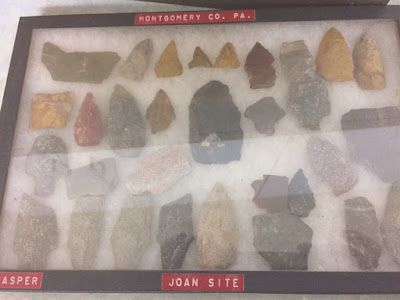The seemingly endless zoning hearings on the 18 acres that Gibraltar Rock would like to open as a second quarry site continued Thursday night with an expert paid by the quarry company disputing testimony from an expert paid by the township.
By strange coincidence, they disagree on several key points.
Currently at issue is the proximity of the site, called GR-IV, to the former Good's Oil site off Route 663, north north of Big Road, the source of significant groundwater contamination in the area.
For months, the two sides have been arguing about whether a quarry operation would have an effect on the contamination or not.
 |
This map, created by the quarry company's consultant,
EarthRes, shows the area of groundwater draw-down
for each 50-foot level quarry digs.
|
The quarry expert insists the flow of the contamination "plume" is flowing southwest, under Route 663.
The township expert says the action of pumping groundwater out of the deepening hole in the ground may well draw the chemical contamination into the pit and thus discharged into a tributary of Swamp Creek, which empties into Perkiomen Creek, a source of public drinking water.
Thursday night was scheduled for Lou Vittorio, the quarry's expert from the firm EarthRes, to rebut testimony from the township's witness, Toby Kessler, from Gilmore Associates.
At the next hearing, on April 6, at 6:30 p.m., Vittorio will be cross-examined by the township's special attorney on the case, Robert Brant.
Among the more notable things Vittorio said are that the state recently asked the company to update the chemicals it will test for in its monitoring wells around the proposed quarry site.
This request, which Vittorio said the company has agreed to, comes on the heels of the discovery in July of a concrete vault on the Good's Oil property containing many of the chemicals which polluted neighbors wells as well as some new ones -- primarily pesticides and petroleum products.
He also said that not only does the quarry's discharge permit from the
 |
Gibraltar Rock witness Lou Vittorino, in the foreground,
testifies Thursday to the New Hanover Zoning Hearing Board.
|
His point is that "in the unlikely event" that contamination reaches the quarry pit, there are many opportunities for the state to react and impose new restrictions or a treatment regimen.
Kessler has already testified that the company's treatment regiment is inadequate for the chemicals in question, particularly a suspected carcinogen called 1,4 dioxane.
The hearing ended with Ross Snook, a relatively new arrival in the 17-year quarry saga, who was earlier this week appointed as chairman of the township's newly reinvigorated Environmental Advisory County.
 |
| Some of Lee Hallman's samples. |
The evidence had to do with the health effects of groundwater contamination at Camp Lejune, a Marine Corps base in North Carolina, and the health effects linked to that contamination. Snook's point is that the Lejune chemicals are similar to the chemicals at issue at the Good's Oil site, such as volatile organic compounds like TriChlorEthylene, or TCE.
He also brought along a man named Lee Hallman, who briefly outlined some of the pre-historic Native American artifacts found on the site of both the first and second quarry proposal sites.
He also brought along samples which he said could be as old as 9,000 years, adding "the site is crucial to Pennsylvania pre-history, which we know so little about."
However his testimony was undermined when he admitted he did not know that the Pennsylvania Historic and Museum Commission has already declared that the quarry operation will not cause any harm to the state's archaeological resources.

No comments:
Post a Comment